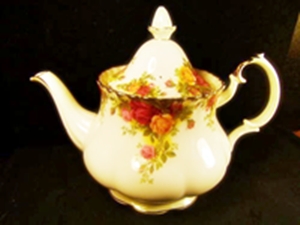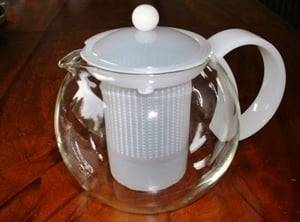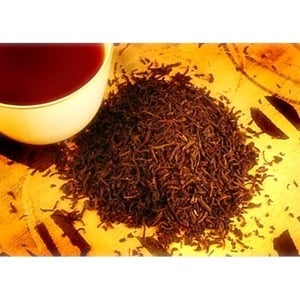How To Make Tea, The way to make a perfect English cup of tea
With over 150 million cups of tea drunk each day in the UK, it is surprising that many people do not know how to make the perfect English cup of tea - here is how you do it!
Over 150 million cups of tea are consumed every day in the UK alone. You might think that Tea is quintessentially English but it was not until the mid 17th century that tea was first drunk in England, brought to our shores by Portuguese and Dutch traders, (although tea arrived in Europe in Venice, Italy in around 1560). The custom of tea drinking spread very slowly from its origins in Asia. Tea had been drunk in China since before 2000 BC. After all that time and effort, I find it rather sad to learn that some people make their tea with hot water from the tap or a teabag in a mug of cold water popped in the microwave - it just tastes horrible that way and if you make it that way you are missing out on a real treat! So, I have written this article to show you how to make the perfect cuppa, the perfect English cup of tea.
How do I make a perfect cup of tea?
- Always use freshly drawn water from the cold tap. There will be more dissolved oxygen in this which helps the flavour of the tea to develop. For this reason, if you live in a hard water area, use a metal kettle not a plastic one and make sure it has a limescale filter.
- Make sure your teapot is clean (although my Father always maintained that you should NEVER wash your teapot, only rinse it out and his tea was always delicious!).
- Warm the pot by swirling a small amount of boiled water in it or, if your teapot has no metal decoration on it, place one cup of cold water in it and heat the teapot in the microwave for one minute.
- Add tea to the pot immediately before pouring on the boiling water
- For black tea, only pour on freshly boiled water and do not over-boil it.
- For green tea, always use the water just at the boil.
- One teaspoon of loose tea per person and one teaspoon for the pot is about right, but add as much or as little to make it to the strength you like. Teabags vary in strength so you may have to experiment.
- Brew loose tea for up to seven minutes – the larger the tea leaf, the longer it will take to brew. Three minutes brewing time is about right for most tea bags.
- Don’t use a tea cosy as it extends the brewing time and can make the tea taste bitter and stewed. A removable infuser or teabags can help to get round this problem.
The Art of Making a Perfect Cup of Tea



Teapot or not?
Tea develops a fuller flavour when allowed room to infuse – in my opinion, it always tastes better from a china teapot and drunk from a china cup or mug.
Milk or not?
With black tea, this is a matter of personal preference. If used, milk should always be poured into the cup before the tea is added. With green tea milk should never be used.
Sugar or not?
Adding sugar to black or green tea is a very individual thing. Some people believe it masks the flavour whilst for others a cup of tea is nothing without it! If you like a sweeter flavour you could try adding clear honey to green tea or use a fruit tea instead as these have a naturally sweeter flavour.
Which tea to choose?
The Twinings tea website has an excellent animated tool to help you choose which of their teas best suits what you are looking for – for example, I chose time of day- morning, how would you like to feel- invigorated, what is your taste-flavoursome and they recommended either Lemon Twist Tea or Green Tea and Mint. Try it for yourself here http://www.twinings.com/au/l2c_which_tea.php
Does loose tea make better tea than teabags?
Many people say ‘yes’ because the tea is free to circulate in the pot, not constrained in a teabag. Of course, if you use loose tea, you will have to use a tea strainer unless you use a teapot with an infuser. If you use teabags, try to use large bags which allow room for the tea to circulate (for example the PG Tips Pyramid bags). If you are environmentally conscious, you may wish to look for unbleached tea bags. But both teabags and loose tea can be added to your compost heap.
How much caffeine is in tea?
The average caffeine content of a cup of tea is around 50 mg – about half that of a cup of freshly brewed coffee. Most herbal and fruit flavoured infusions either contain a negligible amount or no caffeine at all.
It is generally recommended that the maximum amount of caffeine a person should consume from all food sources in a day is 500 mg (300 mg for pregnant women). Because tea contains so little caffeine, I would personally not drink decaffeinated tea because it is one more process the tea has had to go through but for those who may have problems with caffeine, this may be an option.
Tea is a low calorie drink
An average cup of tea, drunk black contains almost no fat and negligible calories, even with semi-skimmed milk and no sugar, the calorie count goes up to 14 (and only 0.5 grams of fat) per cup and an extra 20 calories approximately for every teaspoon of sugar you add.
Twinings infusions contain few calories. Typically a serving contains 16 kj / 4 kcal. The calories are present due to the naturally occurring sugars found in the fruit pieces we use - we do not add any sugar or sweeteners at any time.
The PG Tips website even has a seven day Tea Diet which helps you get into shape by cutting out up to 500 calories per day and doing 45 minutes extra exercise per day (!!) – anyway, if you feel energetic, have a look by clicking the link http://www.pgtips.co.uk/teas/diet.aspx
Tea contains Antioxidants
Teas contain flavonoid antioxidants, the same as the ones in fruit and vegetables some of which are suggested to have more powerful antioxidant properties that Vitamin A and C.
How should I store tea?
Tea, whether it is loose tea or in tea bags is the dried leaves or leaf tips of the tea plant. It therefore reabsorbs moisture if not stored in a sealed container. So, if you don’t want the taste of your tea contaminated by the odours of other food and cooking smells in your kitchen, invest in an airtight container to store your tea.
How to enjoy the perfect cup of tea
Just relax, Japanese tea-drinkers suggest you should cultivate what they call ‘tea mind’, a state of tranquillity! Enjoy!
If you enjoyed this article, please share it!
If you enjoyed this article on how to make the perfect English cup of tea, please will you help me to publicise it by clicking on the tweet or like buttons that you will find under the title of the article? There is also a share button below that will enable you to share it elsewhere too. If you would like to make a comment, it would be really great to hear from you. Thanks for reading.









